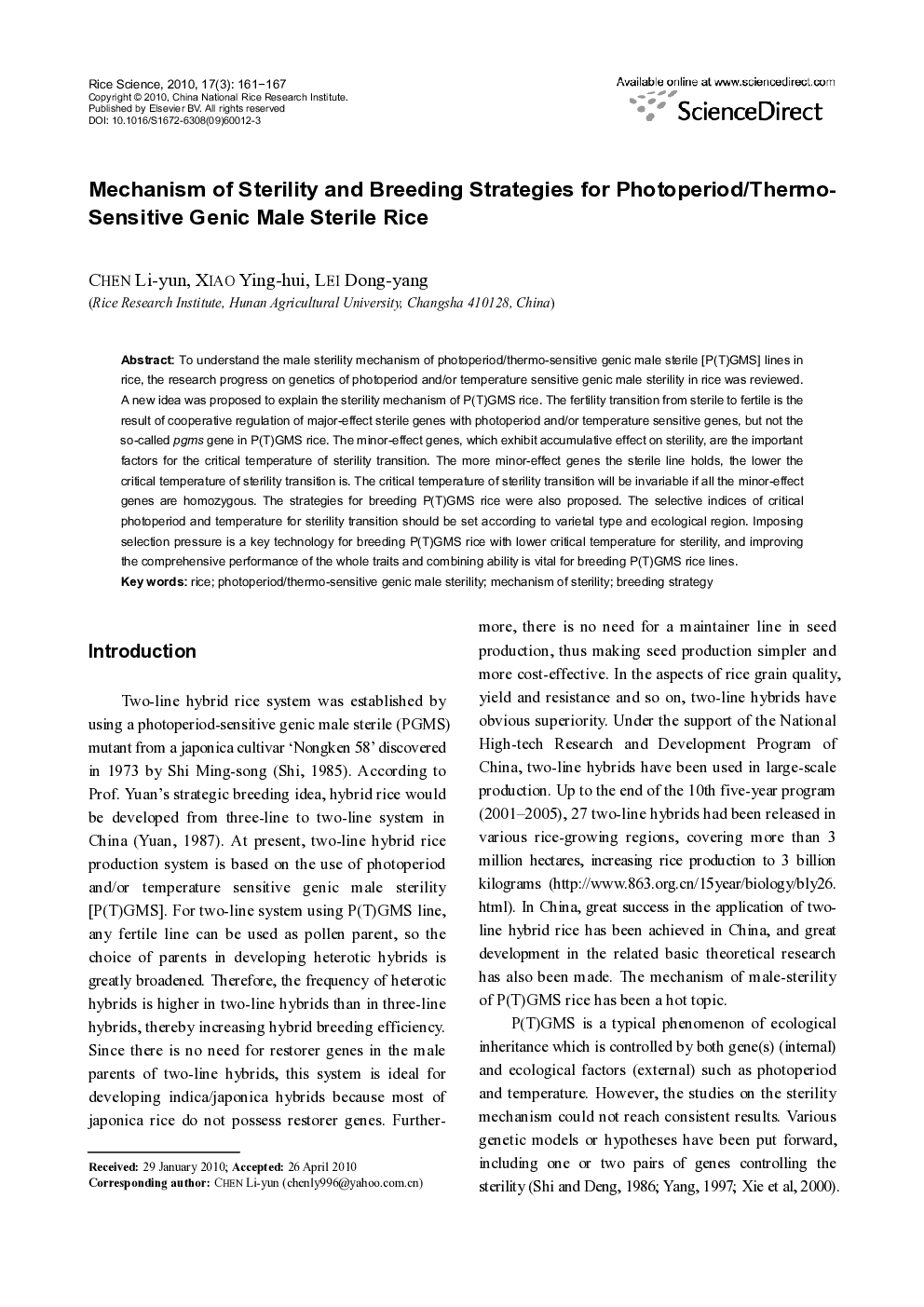| Article ID | Journal | Published Year | Pages | File Type |
|---|---|---|---|---|
| 4502011 | Rice Science | 2010 | 7 Pages |
To understand the male sterility mechanism of photoperiod/thermo-sensitive genic male sterile [P(T)GMS] lines in rice, the research progress on genetics of photoperiod and/or temperature sensitive genic male sterility in rice was reviewed. A new idea was proposed to explain the sterility mechanism of P(T)GMS rice. The fertility transition from sterile to fertile is the result of cooperative regulation of major-effect sterile genes with photoperiod and/or temperature sensitive genes, but not the so-called pgms gene in P(T)GMS rice. The minor-effect genes, which exhibit accumulative effect on sterility, are the important factors for the critical temperature of sterility transition. The more minor-effect genes the sterile line holds, the lower the critical temperature of sterility transition is. The critical temperature of sterility transition will be invariable if all the minor-effect genes are homozygous. The strategies for breeding P(T)GMS rice were also proposed. The selective indices of critical photoperiod and temperature for sterility transition should be set according to varietal type and ecological region. Imposing selection pressure is a key technology for breeding P(T)GMS rice with lower critical temperature for sterility, and improving the comprehensive performance of the whole traits and combining ability is vital for breeding P(T)GMS rice lines.
